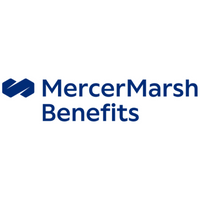Build an AI foundation for your employee benefits strategy
Half of all employers believe leveraging analytical insights can significantly improve employee performance and engagement, according to a recent survey.
More than 85% of HR professionals plan to integrate AI into their employee benefits strategies within the next year.
However, to harness its full potential, organisations must establish a solid foundation of benefits data.
Establishing a single source of truth
The accuracy of AI insights hinges on the quality of the underlying data.
If employee benefits data is fragmented across various systems or requires manual extraction, the insights generated will be flawed.
To address this, organisations should aim to create a ‘single source of truth’ by consolidating all employee benefits data into one centralized platform.
This involves selecting an employee benefits platform capable of automatically aggregating data from different systems, including payroll and benefits providers.
By ensuring that the platform reflects real time changes - such as new enrolments, benefit usage, or employee departures - organisations can maintain accurate and actionable insights.
Cultivating data expertise
While HR professionals excel in interpreting data, many lack the technical skills necessary to generate insights.
To bridge this gap, organisations should consider hiring data specialists or upskilling existing HR staff.
Although upskilling existing HR professionals, or hiring HR professionals with data expertise, is one option, 85% of employers are now looking to consolidate their benefits technology with a single broker or advisor over the next 1-5 years.
This makes sense because partnering with a benefits expert can facilitate the interpretation of data and the implementation of strategies to address challenges such as rising healthcare costs and pay equity.
Enhancing employee experience
Beyond generating analytics, automating communication with employees is a critical aspect of an effective AI strategy.
AI tools, such as chatbots, can streamline interactions, while tailored campaigns can engage different demographics based on data-driven insights.
Moreover, AI can be leveraged to create meaningful emotional connections with employees.
For instance, notifying employees about new benefits following significant life events, such as the birth of a child or a health issue can enhance their overall experience.
Additionally, AI can guide employees toward preventive wellbeing resources, helping to mitigate mental health and musculoskeletal issues.
Therefore, creating a robust AI foundation for your employee benefits strategy requires a dual focus: ensuring accurate data insights and enhancing the employee experience.
By investing in the right technology and expertise, organisations can not only drive engagement but also foster a supportive workplace culture.
As you embark on this journey, consider how your AI strategy can align with your broader organisational goals and the needs of your workforce.
Read more of Mercer’s insights on employee benefits technology platforms and learn how to leverage technology for your business success.
Supplied by REBA Associate Member, Mercer
At Mercer, we believe in building brighter futures.








